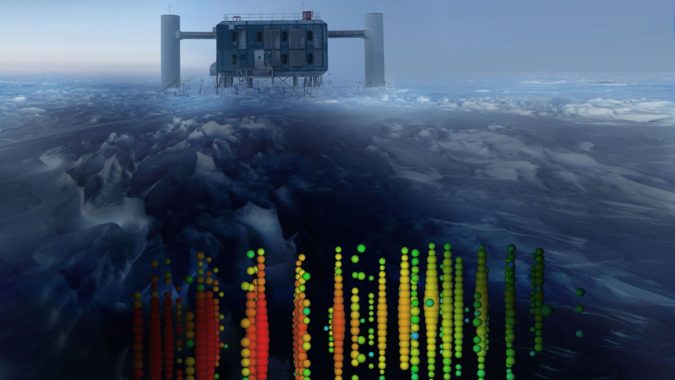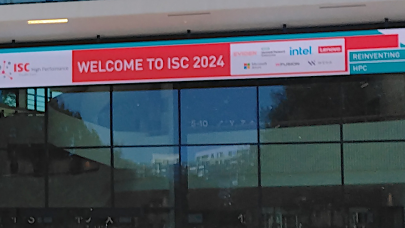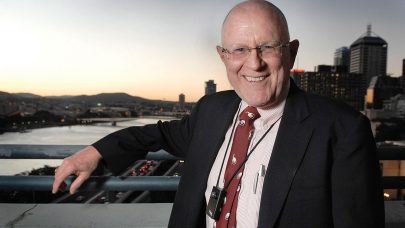When you think of an observatory, you might think about satellite dishes or telescopes aimed at the sky – but at the IceCube Neutrino Observatory, its gaze is focused decidedly inward. The Antarctic observatory uses thousands of sensors buried across a cubic kilometer of solid ice to monitor neutrinos, mysterious particles birthed by nuclear reactions that have otherwise eluded researchers for decades. The data produced by IceCube requires HPC resources to process and analyze: a couple years ago, for instance, IceCube researchers pulled off a 51,000-GPU “cloud burst” to process their data. Now, IceCube is announcing a major breakthrough – once again, powered by supercomputing.
IceCube’s sensor data, when processed, allows researchers to divine a number of any given neutrino’s characteristics. “Based on the analysis, researchers are also able to determine where in the sky the particle came from, its energy, and sometimes, what type of neutrino (electron, muon or tau) it was,” explained James Madson, executive director at the Wisconsin IceCube Particle Astrophysics Center, in an interview with Aaron Dubrow of the Texas Advanced Computing Center (TACC).
Processing this data requires major computing power, for which IceCube employs a wide menu of providers, including the aforementioned cloud resources (such as Amazon Web Services, Google Cloud and Microsoft Azure), the Extreme Science and Engineering Discovery Environment (XSEDE) and the Open Science Grid. The largest system they utilize is the Frontera system at TACC, which boasts 8,008 Intel Xeon-equipped compute nodes and 192 GB of memory, delivering 23.5 Linpack petaflops and ranking ninth on the most recent Top500 list.
Not all of these resources are used for every discovery, of course. Frontera, for instance, is more likely to be used for projects involving the optics of the Antarctic ice, using GPU-powered ray tracing to understand how the high-energy particles produced when neutrinos interact diffuse and scatter through the far-from-uniform icy environment. This application has made IceCube one of the foremost users of Frontera’s GPU subsystem, which applies ray tracing-capable Nvidia RTX GPUs.
Just a few days ago, all this work led to a major discovery for IceCube: the detection of a Glashow resonance event, which had been theorized by physicists for over 70 years but never observed – until now. In a Glashow resonance event, an elementary particle called a W- boson forms due to the interaction of a specific antineutrino with an electron. The observation of the Glashow resonance event helps to validate the Standard Model of particle physics.
“Part of the resources from Frontera contributed to that discovery,” said Benedickt Riedl, global computing coordinator for IceCube. “There’s years of Monte Carlo simulations that went into it to figuring out that we could do this.”
To read the reporting from TACC’s Aaron Dubrow, click here.


























































